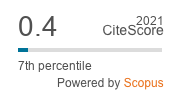Studies on biology and preference of Helicoverpa armigera (Hubner) on different host plants and evaluation of botanicals for its management
DOI:
https://doi.org/10.33307/entomon.v48i3.938Abstract
The biology and fitness of Helicoverpa armigera (Hubner) was studied on bottle gourd, lady’s finger, chilli and tomato. The total larval duration was found to be 20, 22.5, 20.3 and 18.3 days on tomato, chilli, lady’s finger and bottle gourd respectively. The total life cycle was of 35.25, 40.7, 34.2 and 31.3 days on tomato, chilli, lady finger and bottle gourd respectively. Shortest life cycle was observed on bottle gourd and longest on chilli. Feeding preference and fitness of H. armigera revealed that it preferred bottle gourd over other host plants. On bottle gourd, the pest recorded highest mean larval weight gain (0.112g/ day), while the lowest was on chilli (0.090g/ day). The feeding period was 8.073 days on bottle gourd and 8.266 days on chilli. Average food ingested on bottle gourd, lady finger, chilli and tomato were 3.083, 2.347, 2.076 and 1.988g respectively. Bioefficacy of botanicals (5 % aqueous extracts of periwinkle, giloy, tulsi and lantana) against H. armigera by leaf dip bioassay using leaves of tomato showed that the average food ingested in periwinkle, giloy, tulsi, lantana and control was 0.644, 0.944, 1.038, 0.985 and 2.297g respectively. This is the first report evidencing the insecticidal properties of aqueous extracts of giloy against H. armigera.


